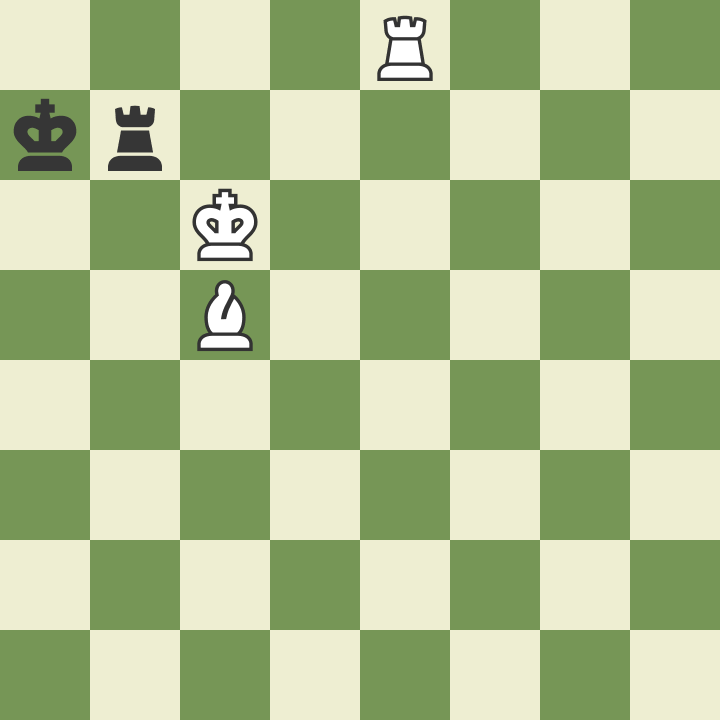Knowing chess rules are very much important. Most players like to play chess but are unaware of the various rules of a chess game. People still have the doubt whether the 16 move rule is present in a chess game?
In chess, there is no 16 move rule to draw the game. By rule of chess, there is 50 move draw, where the player can announce a draw if no capture and no pawn movement happens on the last 50 moves. If 75 moves are made without any capture or pawn move, the arbiter can announce the game as a draw.
These rules are very much important while playing tournaments. There are many players who still think that the 16 move draw rule exists. Sometimes it’s seen that chess hustlers follow 16 move rules.
16 Move Rules in Street Chess

The 16 move rules are mostly seen in street games. In these types types of games, the rules are not well followed. Mostly street chess is played for fun, also sometimes they used to bet for money.
Street chess is really fun to play. It have got all the emotons like fun, sportsmanship, anger, and so on. Players used to gather in streets to play in Open areas. NewYork been one of the major country who likes to play street chess most.
Blitz is one of the most liked street games. People like to think fast and start new games as soon as possible. There are players who still follows 16 move rules in blitz games. Due to this rule players are seen to left opponent with atleast a pawn on the chess board to avoid such draw scenerios.
In street chess players wont be following the main opening principles in chess or they wont be well prepared in various chess openings. Eventhough the standard of games will be much better and higher.
Different Draw Rules in Chess
By FIDE laws of chess, there are various rules for a game to end up in a draw. The different draw rules in chess are:
- Stalemate
- Threefold repetition rule
- Fifty move rule
- Five Fold repetition
- Seventy five move rule
- Positions with impossible checkmates
- Mutual agreement
50 move rule in chess
In 50 move rule, the player can claim draw if no caputure and no pawn been moved in past 50 moves of the game. The main purpose of the rule is to prevent undefinite play, if the player have no chance of winning.
A player can claim draw in his move time only, else it wont be considered as a draw claim. There are many instances where players cannot convert the game to a winning postion, or some times players tries to continue the game to make the opponent jump into time trouble. By the 50 move rule the players have the chance to overcome these issues by claiming draw.
Beginner players are usually seen to keep on playing the games even if they have mating pieces on the chess board. This is mainly due to the lack of knowledge and to avoid these issues, the 50 move rule is very much important.
In the 20th century it was discovered that certain endgame positions are winnable but require more than 50 moves (without a capture or a pawn move). The rule was therefore changed to allow certain exceptions in which 100 moves were allowed with particular material combinations. However, winnable positions that required even more moves were later discovered, and in 1992, FIDE abolished all such exceptions and reinstated the strict 50-move rule.(Source )
)
In Nguyễn vs. Vachier-Lagrave, Aeroflot Open of 2008, Vachier-Lagrave claimed the draw by 50 move rule.

In the position Ka7 is under check. Either the king can move to a6 or can play Rb6.
If Rb6 is played
BxR+ – Ka6
Ra8#
If Ka6 is played
Ra8+ – Ra7
RxR#
Eventhough the game is 2 move away from winning, the game resulted since the opponent was unable to create the checkmate in the last 50 moves.
Seventy-Five move rule
Seventy-Five move rule, the artiber can claim the draw if no captures and no pawn movements happened in the game. The rule plays a major rule in many tournaments, since many times people forget the 50 move rule due to the spirit of chess. In some scenerioes the players will be unaware of the 50 move rule and to overcome this issues, FIDE introduced the 75 move rule in chess.
Here no claims need to be made by either of the players. The rule states
Any series of at least 75 moves have been made by each player without the movement of any pawn and without any capture. If the last move resulted in checkmate, that shall take precedence.
These rules are mostly made in Over the Board tournaments. The 50 move rule exists in most of the online playing platforms by the 75 rule gets only applied if the game is controled by the arbiter.
Most of the players hate if someone interfere in the games. In many places when arbiters try to make the claims players become frustrated. But at the end ” the rule is rule”.
How many moves allowed in chess when king is left?
If the king is left alone on the chess board, total of 50 moves can be made by both players. Mostly players try to check mate the lone king with Queen and Rooks.
Many people also have the doubt on what happen when the board is left with King alone for both players. If the chess game is only left with king, the game is said to be a draw. To know more about checkmate of king click here
Related Questions
Is there 13 move rule in chess?
There is no 13 move rule in chess. A player can claim draw using the 50 move rule in chess. Also in most cases it takes more than 13 moves to checkmate the king even if you are left with mating pieces.
What is 21 rule move in Chess?
There is no 21 move rule in chess game. These rules are maily introduced in street games and in law of chess, there is nothing like 21 rule in chess.
